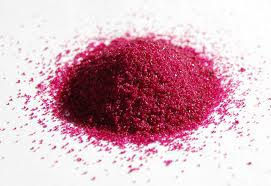







Search:

Cobalt(II) chloride
|
1. $H_2S$ |
|
no precipitation in acid medium |
|
2. $(NH_4)_2S$ |
|
$Co^{2+}$ $+$ $S^{2-}$ $\longrightarrow$ $CoS$ - Black precipitate - Soluble in $HCl$ - Soluble in $HCl/HNO_3$ |
|
3. $KOH$ |
|
$Co^{2+}$ $+$ $2OH^-$ $\longrightarrow$ $Co(OH)_2$ - Blue precipitate - Insoluble in dilute mineral acids - Insoluble in excess reagent - Oxidizes slowly in air, quickly by $Br_2$ or $H_2O_2$: $Co(OH)_2$ $+$ $Br_2$ $+$ $2OH^-$ $\longrightarrow$ $2Br^-$ $+$ $2Co(OH)_3$ - précipité brun |
|
4. $NH_3$ |
|
$Co^{2+}$ $+$ $2OH^-$ (peu) $\longrightarrow$ $Co(OH)_2$ - Blue precipitate - With an excess of $NH_3$, there is complexing and oxidation: $Co(OH)_2 \longrightarrow [Co^{III}(NH_3)_6]^{3+}$ - Hexamminecobalt(III), soluble, brown-yellow |
|
5. $KCN$ |
|
$Co^{2+}$ $+$ $2CN^-$ $\longrightarrow$ $Co(CN)_2$ - Brown precipitate - With an excess of $CN^-$, there is complexing and oxidation: $Co(CN)_2 \longrightarrow [Co^{III}(CN_6)]^{3-}$ - Hexacyanocobaltate(III), soluble, brown-yellow - the reaction masks $Co^{2+}$ to $SCN^-$, but not to $S^{2-}$ and $OH^-$ |
|
6. $NH_4SCN$ |
|
$Co^{2+}$ $+$ $4SCN^-$ $\longrightarrow$ $Co(SCN)_4^{2-}$ - Blue complex in the presence of pentanol/ether, dissociates in water - Very sensitive reaction - $Fe^{3+}$ hinders by the formation of red blood thiocyanate, complex iron with a pinch of solid $NaF$ - The reaction masks $Co^{2+}$ to $SCN^-$, $S^{2-}$ (turn to red) and $OH^-$ |